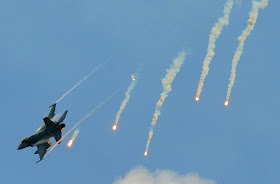 |
| An oil platform in the South China Sea |
The relative calm in the Taiwan Strait since 2008 is one of the principal factors behind China’s increasingly aggressive stance in the South China Sea, a Vietnamese academic told a conference in Washington on Wednesday.
The two-day conference, organized by the Center for Strategic and International Studies (CSIS), was held amid rising tensions in the South China Sea following the announcement by China National Offshore Oil Corp (CNOOC) earlier this week that it was offering nine blocks for joint operation with foreign firms in waters that Vietnam claims fall within its exclusive economic zone (EEZ), prompting Hanoi to lodge an formal protest.
Speakers from China, Vietnam and the Philippines — all claimants in the South China Sea disputes — were invited to give presentations on the subject, while academics from the US, Japan and India, which do not have sovereignty claims in the area, provided external rationales for their involvement in conflict resolution. No one from Taiwan, one of the six claimant countries, presented at the conference.
Full article in the Taipei Times continues here.










